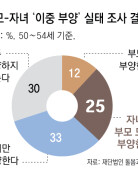All births deserve to be celebrated
All births deserve to be celebrated
Posted November. 28, 2024 07:36,
Updated November. 28, 2024 07:36
The birth of a child is undoubtedly a moment of joy and celebration. Jan Steen’s “Celebrating the Birth” (1664) offers a fascinating glimpse into how a Dutch middle-class family might commemorate such an occasion. However, unlike typical depictions centered on the mother and child, Steen intriguingly shifts the focus to the father.
Jan Steen (1626-1679), a prominent Dutch genre painter, was known for his masterful storytelling and use of subtle humor. At first glance, the painting celebrates a proud father holding his newborn, surrounded by women who seem to be honoring the occasion. His wife, still recuperating, lies in bed on the left side of the painting, being served soup. As was customary at the time, no man other than the husband was allowed in the birthing room, leaving the space filled with women—likely relatives, friends, and the midwife. On the surface, the father seems deserving of the attention. But a closer look reveals subtle hints of mockery rather than genuine admiration from the women in the room.
For example, the woman in a red dress on the right of the painting holds a dangling sausage and gazes directly at the viewer with a knowing look. Broken eggshells on the floor further hint at the father’s impotence; in 17th-century Dutch symbolism, “cracked eggs” were a euphemism for sexual activity. The most telling detail lies in the background, where a young man exits the room, smiling knowingly while making a hand gesture above the baby’s head. This figure, the only other man in the scene, is a self-portrait of Steen himself. His expression and placement suggest a deeper layer to the story—hinting that the baby might not be the husband’s child. The room’s occupants, it seems, are all aware of the child’s illegitimacy, except for the unsuspecting father.
While the birth of a child is inherently worth celebrating, Steen’s painting is rich with visual puns and layered symbolism, inviting viewers to reflect on themes of marriage, fidelity, trust, and societal norms. By shifting the focus from mother to father and weaving in subtle elements of satire, Steen compels us to question the nature of family, truth, and the meaning of celebration itself.







